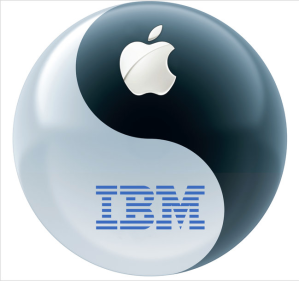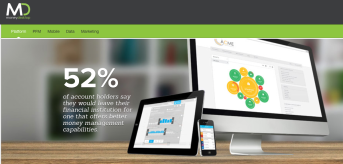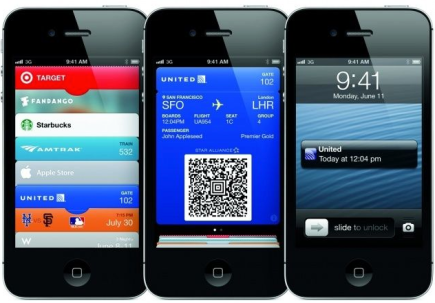 I have worn many hats working in the financial technology vertical including business development, product, marketing and partnership development. In fact, I managed the IBM partnership for a PFM technology provider I joined in 2010. IBM played an important role for the PFM technology provider for it opened access to many of the financial institutions that run on the IBM technology to support core, online and mobile banking systems. Specifically, the PFM solution ran on IBM’s Websphere mobile software and on the IBM DB2 data base software. The software compatibility proved to be a strong selling point during business development discussions with banks that ran core legacy banking systems on Big Blue.
I have worn many hats working in the financial technology vertical including business development, product, marketing and partnership development. In fact, I managed the IBM partnership for a PFM technology provider I joined in 2010. IBM played an important role for the PFM technology provider for it opened access to many of the financial institutions that run on the IBM technology to support core, online and mobile banking systems. Specifically, the PFM solution ran on IBM’s Websphere mobile software and on the IBM DB2 data base software. The software compatibility proved to be a strong selling point during business development discussions with banks that ran core legacy banking systems on Big Blue.
I learned fairly quickly that one of the biggest objections from mid-tier and larger banking executives was, “love your technology….but it MUST run on our legacy core and online banking systems.” Fortunately for us, we overcame this objection by playing the “we run on IBM” card to continue conversations. Unfortunately for IBM, these legacy limitations prevent many financial institutions from launching new tools and features that help consumers access their money through a mobile device. As we fintechers all know, these mid-tier and large banks are losing customers to the more sophisticated, innovative and mobile centric financial institutions…like Moven, Simple or GoBank. An April 2013 Forrester study found that nearly 50% of respondents said they would be willing to switch to a bank with a better mobile experience.
The recently announced partnership between Apple and IBM could fix this and will position both companies very well for continued growth in the mobile banking and payments verticals..even with Millennials. I know, this is shocking …but in the words of Kevin Nealon, “now hear me out.”
As part of this partnership, IBM will be launching roughly 100 native mobile apps developed specifically for iOS. These apps are part of the MobileFirst platform IBM launched earlier this year and will adhere to the security, backup and data movement capabilities IBM is known for across the high technology industry. These capabilities are what keep banking IT executives coming back to Big Blue and a few of these iOS apps will strategically address the specific needs of the banking vertical.
The collaboration between IBM and Apple to build these apps will allow legacy systems written in Assembler or COBOL to run on the iPhones and iPads. Penny Crosmen at American Banker states, “Making existing mainframe applications usable on iPads could help banks bring mobility to old technology.” This is HUGE for it helps banks easily engage with customers within the branch, through merchants or at home through a mobile device without having to make heavy investments in new technology or go through the lengthy process of selecting a clunky third party provider. For example, a bank will no longer need to license mobile platform technology from a Kony or mFoundry for their IBM partnership will open up mobile functionality through iOS sitting on top of legacy software. This is cool for the banks…but SCARY for mobile platform providers.
The biggest use cases for the IBM/Apple mobile technology marriage can be seen at the branch and merchant levels. I can easily envision a wealth management representative having an in-branch investment conversation with a client using an iPad. The representative easily accesses a client’s core banking information from the mobile device and displays current balances, checking account activity and recommended investment opportunities right on the tablet. Taking this one step closer to the consumer, I envision the consumer later that evening going back to the banking application and sharing the investment recommendations with his/her spouse. Together the couple reviews the recommended investments, discusses financial goals and asks for further detail from their adviser directly from the iOS application. Tadaaaaaah! The mobile/table user experience is helping the bank build deeper customer relationships through helping consumers manage their money…leveraging a channel the consumer prefers.
The second benefit of this marriage comes at the business banking level. This relationship should make payment providers pause…and maybe even shit. Imagine a small retail merchant opens a business banking account that includes the “rental” of a payments tool like a card reader. The Apple/IBM relationship enables the bank to provide payments tools, card processors, etc. through already widely adopted iOS products. The bank may even function as a third party retailer for the iOS hardware and will save money by phasing out those clunky counter top card processors. Banks will take away a key competitive advantages from payment providers who boast about the ease of use and mobility of collecting payments. Additional benefits for the bank are the ability for business bankers to track small business activity and recommend lower cost banking products, loan savings opportunities based on the specific business activity and transactions. Banks can also FINALLY find the right channel to provide those ever so sought after (and never well executed) locally targeted special offers and discounts to consumers.
For those of you keeping score at home, the consumer will also benefit from the IBM/Apple partnership. The iOS loving consumer will now be part of the same payment ecosystem merchants have with their banks. The iOS system now includes Passbook and it is no far leap to envision this evolving into a wallet that holds bank provided payment cards. This is “duh” obvious. Given that merchants, banks and consumers are all part of the same iOs payment system, consumers can easily continue using their long held VISA and Mastercards on their mobile device. Continued adoption of the same payment ecosystem may provide opportunities for lower processing fees for all involved. Unfortunately, at this point the mobile payment providers are now banking on lower fees as their main value proposition. However, if banks are able to provide an easily adopted mobile wallet with many iOS supported merchants accepting these payments, even lower fees may be a moot point. Consumers will be able to FINALLY use their mobile wallets at the merchants and service providers they have always used.
Wow, way to go Apple. You created a true mobile wallet.







